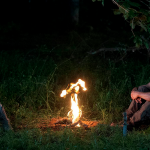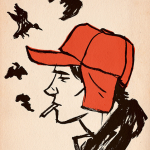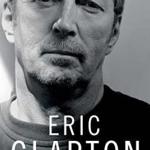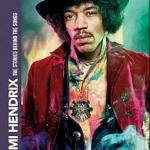Shockingly, in Brad Gooch’s new Flannery O’Connor biography, the phrase “Christ-haunted South” doesn’t even make a single appearance. In retrospect, I think this may be to Gooch’s credit, and here’s why: the field of publishing about Flannery O’Connor has been so dominated by devout Catholics and evangelical Protestants that readers who share neither persuasion have become frustrated with the religious emphasis in O’Connor scholarship. (It was eye-opening to me when a grad school professor expressed this view to me a few years ago.) It’s true that literary scholarship in general is not a particularly friendly place for Christians, so our passionate attachment to Christian writers like O’Connor is certainly understandable—but when that passionate attachment approaches something like possessiveness of “our” literary saints, does that actually turn people away from an appreciation of their words? Brad Gooch’s Flannery: A Life of Flannery O’Connor is hardly secular: like O’Connor’s South, it is still Christ-haunted (as opposed to Christ-centered), but, on the topic of religious belief, he remains content to let O’Connor’s words speak for themselves.
The problem with not centering O’Connor’s life-story around her Christian faith is that the biography often finds itself grasping for lack of a coherent theme. Gooch tries peacocks—which, of course, along with other fowl, were one of O’Connor’s lifelong obsessions. He begins the biography with the tale of the Pathe news company coming to Savannah, O’Connor’s childhood home, to film footage of a chicken she had taught to walk backwards. Though O’Connor’s fowl friends rarely made appearances in her fiction (her short story “The Displaced Person” is the one example I can think of), Gooch tries to connect this childhood anecdote to O’Connor’s contrary stance as a writer who wove tales of characters “going backwards to Bethlehem.”
In spite of the previous lack of a definitive biography of O’Connor, so much is already known about O’Connor’s short life (she died of lupus at age 39) that a study of her life really needs a distinctive “angle” in order to contribute something new. Gooch’s biography is the first to appear after Emory University, in 2007, released the papers of Betty Hester, one of O’Connor’s most insightful friends and correspondents, previously known only as “A.” to readers of The Habit of Being (a collection of O’Connor’s letters, and one of the best books I’ve ever read). However, Gooch’s work doesn’t contribute much of interest to our knowledge of the Hester-O’Connor friendship beyond what was already shared when the Hester papers were first released. Gooch quotes the exchange, previously reported on NPR, in which Hester revealed what she called her “history of horror”: dishonorable discharge from the military for having a sexual relationship with another woman. O’Connor replied, “I can’t write you fast enough and tell you that it doesn’t make the slightest bit of difference in my opinion of you, which is the same as it was, and that is: based solidly on complete respect. . . . Where you are wrong is in saying that you are a history of horror. The meaning of the Redemption is precisely that we do not have to be our history.”
Those words reduced me to tears when I first heard them on the radio two years ago, and they did the same when I encountered them in print. However, Gooch doesn’t seem to draw much else from the Hester papers (and it’s possible that there’s just not much else interesting—and unpublished—there), so that doesn’t supply a unique angle. What Gooch does contribute is a view of O’Connor from “outside”—we see her not only through her own words, but also as others saw her, thanks to Gooch’s often humorous interviews with O’Connor’s relatives, acquaintances, and friends.
Many of these interview comments do relate to fowl, as when a childhood classmate of O’Connor’s recalls, “When we were in the third grade, Sister Consolata used to give Mary Flannery [as a child, she went by her given double-first-name] a real hard time about her compositions. . . . She said that she always wrote about ducks and chickens and she said she never wanted to hear about another duck or a chicken.” Others report the reaction of one of O’Connor’s aunts to the publication of Wise Blood: “I don’t know where Mary Flannery met those people she wrote about, but it was certainly not in my house.” Ironically, of course, O’Connor’s aunt and mother and other relatives who looked down upon “those people” would be skewered—sometimes literally—in her later fiction.
Sometimes Gooch goes a little too far in trying to connect O’Connor’s real-life acquaintances to their fictional counterparts. For example, in a chapter called “The Bible Salesman,” Gooch focuses on O’Connor’s friendship with Erik Langkjaer, a young textbook salesman she met after she had been diagnosed with lupus. After lingering on Langkjaer’s rather grotesque description of the kiss he shared with O’Connor, Gooch then makes it seem as if O’Connor’s story “Good Country People”—in which a Bible salesman kisses an awkward crippled woman, then steals her wooden leg—is real life transcribed onto the page. O’Connor herself would probably be amused by this interpretation, just as she was when a man in New York asked her if she had a wooden leg.
O’Connor’s personality, in its flaws and its virtues, her shyness and her boldness, her crankiness and her gentleness, does shine through in Gooch’s biography. My hope is that, since Gooch is not writing from inside the Christian group of O’Connor devotees, more people outside the church may be led to read her fiction for themselves and there encounter her portraits of God’s radical grace in all their original power. As harsh as she was to the hypocritical and the proud, O’Connor was remarkably compassionate toward the “displaced persons,” those still searching for home.
Note: For readers who do want a more thorough exploration of O’Connor’s Christian belief and how it affected her fiction, two excellent reads are Christina Bieber Lake’s The Incarnational Art of Flannery O’Connor and Ralph C. Wood’s Flannery O’Connor and the Christ-Haunted South (there’s that phrase!). Another helpful work is Paul Elie’s mammoth The Life You Save May Be Your Own: An American Pilgrimage, which places O’Connor’s life and thought in the context of fellow American Catholic writers Dorothy Day, Thomas Merton, and Walker Percy.















